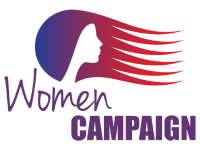Understanding Blended Hourly Rates in Political Campaign Businesses
There are a lot of ways to quote a project, but the two main strategies are hourly and project-based. In the case of hourly, it’s fairly straightforward with a small team doing similar work, but it’s not as easy to quantify when you have a larger team with many experience levels or disciplines. That’s when the “blended hourly rate” comes into play. This term may sound complex, but it simplifies billing and ensures a fair cost structure for services rendered. Here, we’ll explore what blended hourly rates are, why they’re important, and how they can be effectively utilized in a political campaign business.
What is a Blended Hourly Rate?
A blended hourly rate is an average rate charged for services, combining the various hourly rates of team members involved in a project. Instead of billing clients at different rates depending on who performs the work, a single rate is established by averaging the hourly rates of all team members. This approach offers simplicity and predictability in billing, making it easier for campaign managers to budget and for clients to understand their expenses.
Calculating Blended Hourly Rates
The calculation of a blended hourly rate involves summing the individual hourly rates of all team members and dividing by the number of members. Here’s a simple formula:
Blended Hourly Rate = (Sum of Hourly Rates of Team Members) / (Number of Team Members)
For example, if a political campaign team consists of:
- A senior strategist charging $200 per hour
- A campaign manager charging $150 per hour
- A social media specialist charging $100 per hour
- A field coordinator charging $50 per hour
The blended hourly rate would be calculated as follows:
Team Member Rates:
- Senior Strategist: $200/hour
- Campaign Manager: $150/hour
- Social Media Specialist: $100/hour
- Field Coordinator: $50/hour
Calculation:
Blended Hourly Rate = (200 + 150 + 100 + 50) / 4 = $125
So, the blended hourly rate for this team would be $125 per hour.
Advantages of Using Blended Hourly Rates
1. Simplified Billing Process:
Blended hourly rates streamline the billing process. Instead of tracking and billing different rates for various team members, a single rate simplifies invoicing. This ease of administration can save time and reduce errors.
2. Predictability in Budgeting:
Campaigns often operate under strict budgets. Blended rates provide a predictable cost structure, allowing campaign managers to plan and allocate resources more effectively. Knowing the average cost per hour helps in forecasting expenses and making informed financial decisions.
3. Fair Distribution of Costs:
By averaging the rates, blended hourly rates ensure that the costs are distributed fairly across the entire team. Clients are not overburdened by high rates for senior team members or undercharged for junior staff, leading to a balanced approach in service delivery.
4. Enhanced Client Trust:
Transparent and straightforward billing practices foster trust between the campaign business and its clients. When clients understand how they are being charged, it enhances credibility and builds a stronger working relationship.
Implementing Blended Hourly Rates in Political Campaigns
1. Assess Team Composition:
Begin by evaluating the team members who will be involved in the campaign. Consider their roles, expertise, and respective hourly rates. The more diverse the team, the more accurately the blended rate will reflect the overall service cost.
2. Establish Clear Communication:
Clearly communicate the blended hourly rate to clients from the outset. Explain how it is calculated and the benefits it offers. Transparency is key to ensuring clients are comfortable and confident in the billing process.
3. Regular Review and Adjustment:
Campaigns evolve, and so do team compositions and roles. Regularly review and adjust the blended hourly rate to reflect any changes in the team structure or market rates. This practice ensures that the rate remains fair and accurate over time.
4. Incorporate into Contracts:
Include the blended hourly rate in all contractual agreements. Outline the terms, calculation method, and any conditions that may affect the rate. A well-defined contract protects both the campaign business and the client, minimizing potential disputes.
Real-World Application: A Case Study
Consider a political campaign that is gearing up for an election. The campaign team comprises seasoned strategists, communication experts, social media specialists, and field coordinators. By adopting a blended hourly rate, the campaign manager ensures a straightforward billing process. The client, in this case, a political candidate, appreciates the predictability and transparency in costs, allowing them to focus on their campaign strategy without worrying about fluctuating expenses.
Over the course of the campaign, as the team adjusts and new members join, the campaign manager reviews and updates the blended rate accordingly, within the terms of the contract. This proactive approach maintains fairness and accuracy, ultimately contributing to the campaign’s financial health and client satisfaction.
In the realm of political campaign businesses, where precision and clarity are paramount, the blended hourly rate serves as an invaluable tool. It simplifies billing, enhances budget predictability, ensures fair cost distribution, and fosters trust with clients. By understanding and implementing blended hourly rates, campaign managers can create a more efficient and transparent financial framework, paving the way for successful and well-managed campaigns.
As political campaigns continue to evolve, embracing financial practices that promote transparency and efficiency will be crucial. Blended hourly rates offer a practical solution, helping campaign businesses deliver exceptional value while maintaining fiscal responsibility.







